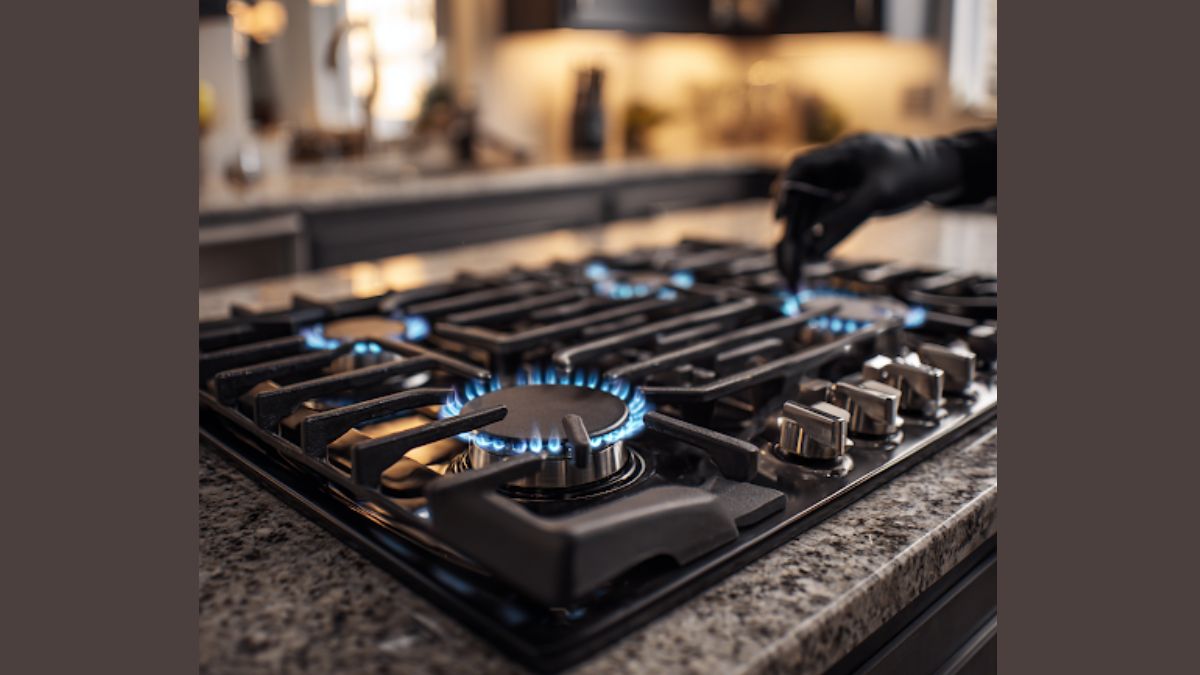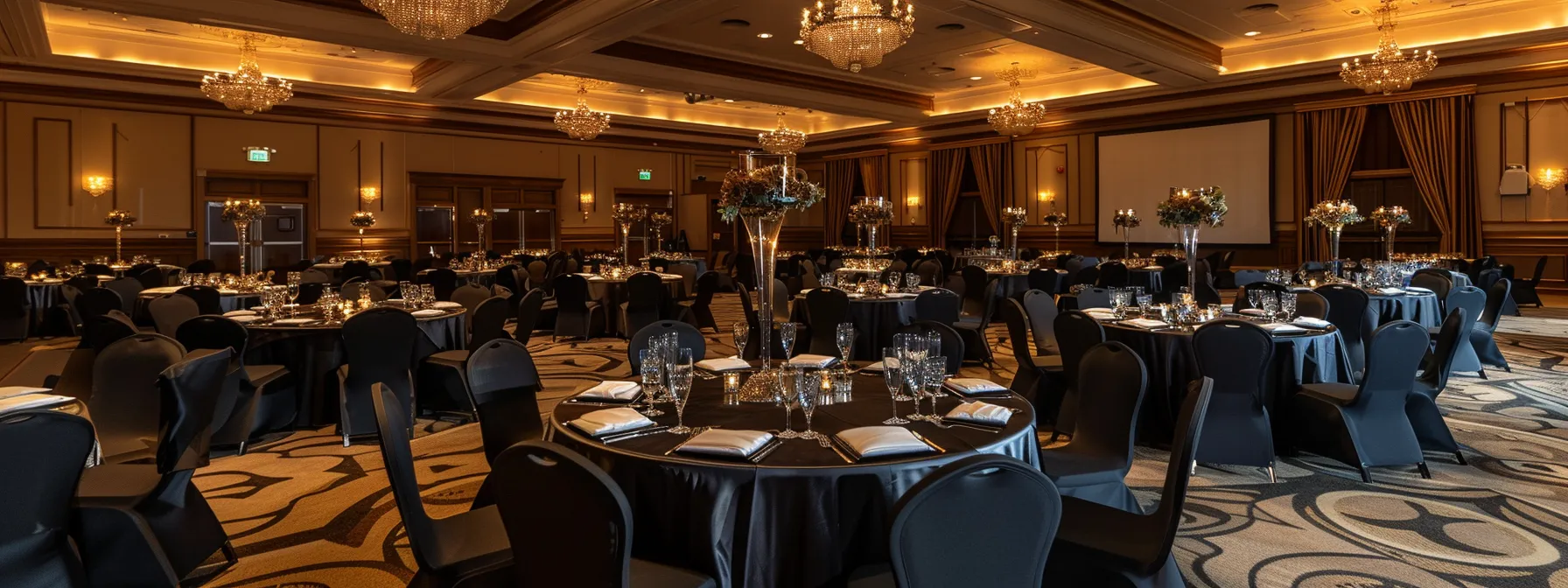BLOG
Woody Allen: A Documentary Part 1

In the world of cinema, few names evoke as much intrigue and discussion as Woody Allen. Known for his unique storytelling, quirky characters, and intellectual humor, Allen has carved a niche for himself in the film industry. But beyond his films lies a complex personality that has fascinated audiences and critics alike. This blog post will explore the first part of the documentary “Woody Allen,” providing insights into the man behind the lens. Whether you’re a lifelong fan or new to his work, this exploration promises to offer a fresh perspective on the enigmatic director.
An Introduction to Woody Allen’s Legacy
Woody Allen’s impact on cinema is undeniable. From classics like “Annie Hall” to thought-provoking pieces like “Midnight in Paris,” his films have left an indelible mark on audiences worldwide. But the documentary “Woody Allen” goes beyond his filmography, offering a glimpse into his life, inspirations, and controversies. In Part 1, viewers are introduced to Allen’s early years, his rise to fame, and the personal experiences that shaped his artistic vision. This section sets the stage for understanding the man who has influenced generations of filmmakers.
Exploring Allen’s Early Years
Born Allan Stewart Konigsberg in Brooklyn, New York, Woody Allen early life was marked by a passion for storytelling. From a young age, he showed a flair for writing, crafting jokes for local newspapers and stand-up comedians. This section of the documentary paints a picture of a young Allen, driven by a desire to entertain and connect with audiences through laughter. It highlights his early influences, from the vibrant streets of New York to the comedic legends he admired, all of which played a role in shaping his unique style.
The Birth of a Filmmaker
Woody Allen’s transition from a comedy writer to a filmmaker marked a turning point in his career. Inspired by European cinema and the works of directors like Ingmar Bergman and Federico Fellini, Allen sought to create films that blended humor with introspection. The documentary captures this evolution, showcasing his early projects and the challenges he faced in bringing his vision to life. Through interviews and archival footage, viewers gain insight into Allen’s creative process and the determination that fueled his success.
The Magic of New York City
A recurring theme in Woody Allen’s films is the city of New York itself. Known for its bustling streets, diverse culture, and iconic landmarks, New York serves as both a backdrop and character in many of Allen’s works. Part 1 of the documentary explores Allen’s deep connection to the city and how it has influenced his storytelling. From the charming streets of Manhattan to the lively jazz clubs of Greenwich Village, Allen’s New York is a place of inspiration and discovery.
Allen’s Unique Storytelling Style
What sets Woody Allen apart from other filmmakers is his distinctive storytelling style. Known for his witty dialogue, existential themes, and often neurotic characters, Allen’s films reflect both his personal experiences and philosophical musings. This section of the documentary dissects Allen’s approach to filmmaking, from his preference for improvisation to his use of narrative techniques that blur the lines between reality and fiction. Through interviews with collaborators and film experts, viewers gain a deeper understanding of the artistry behind Allen’s work.
Collaborations and Influences
Throughout his career, Woody Allen has collaborated with some of cinema’s most talented actors and actresses. From Diane Keaton to Scarlett Johansson, these collaborations have resulted in some of Hollywood’s most memorable performances. Part 1 of the documentary highlights these partnerships, exploring how Allen’s direction brings out the best in his cast. It also delves into the filmmakers and artists who have influenced Allen’s work, revealing the diverse tapestry of inspirations that have shaped his cinematic vision.
Controversies and Criticisms
Despite his success, Woody Allen’s career has not been without controversy. Personal allegations and public disputes have cast a shadow over his legacy, prompting debates about the separation of art and artist. The documentary addresses these controversies head-on, presenting multiple perspectives and allowing viewers to form their own opinions. This section is essential for understanding the complexities of Allen’s public persona and the impact of these issues on his body of work.
The Humor and Philosophy of Allen’s Films
Woody Allen’s films often balance humor with deep philosophical questions, inviting audiences to reflect on life’s absurdities and complexities. Part 1 of the documentary examines this duality, exploring how Allen uses comedy as a tool for introspection and critique. Whether through slapstick humor or biting satire, Allen’s films encourage viewers to laugh while pondering the deeper mysteries of existence. This section highlights some of Allen’s most iconic scenes, illustrating the delicate interplay between comedic timing and existential inquiry.
The Legacy of Woody Allen
Woody Allen’s influence extends beyond his films, impacting the broader cultural landscape and inspiring new generations of storytellers. This section of the documentary reflects on Allen’s legacy, examining his contributions to the art of filmmaking and the enduring relevance of his work. From groundbreaking narrative structures to innovative approaches to character development, Allen’s films continue to resonate with audiences and filmmakers alike.
What Lies Ahead for Allen?
As the documentary concludes Part 1, it raises questions about the future of Woody Allen’s career and the evolving perception of his work. With a prolific filmography and a complex public image, Allen remains a figure of intrigue and debate. This final section offers a glimpse into potential future projects and the ongoing discussions surrounding his legacy. It encourages viewers to consider how Allen’s past will inform his future and what new stories he may yet bring to the screen.
A Call to Explore Further
For those captivated by the world of Woody Allen, Part 1 of this documentary is just the beginning. It invites viewers to explore Allen’s extensive body of work, engage with the themes and characters that define his films, and participate in the ongoing dialogue about his impact on cinema. Whether you’re revisiting classic favorites or discovering new gems, there’s always more to uncover in the enigmatic world of Woody Allen.
In summary, “Woody Allen: A Documentary Part 1” offers a comprehensive overview of the director’s life, artistry, and influence. Through a blend of personal anecdotes, historical context, and expert analysis, the documentary provides a multifaceted portrait of one of cinema’s most intriguing figures. For fans and newcomers alike, it serves as an invitation to explore the rich tapestry of Woody Allen’s work and the enduring legacy of his films.
BLOG
The Kitchen Crisis Nobody Talks About (Until It’s Too Late)

Here’s a scenario that’s played out in kitchens across the country: you’re halfway through prepping dinner when your burner decides to throw a tantrum. No heat. No flame. Just silence and the growing realization that takeout’s about to become very expensive. This is where understanding quick stove repair solutions becomes less about home maintenance and more about preserving your sanity. Because when your cooking surface goes rogue, every meal becomes a logistical nightmare. The good news? Knowing when and how to get emergency gas stove repair service can transform a week-long disaster into a same-day fix.
What most people don’t realize until they’re standing in front of a cold cooktop is how appliances quietly complete your home’s functionality. Your stove isn’t just a cooking tool, it’s the anchor of your daily routine. And when that anchor breaks loose, everything else starts drifting. You know what’s truly fascinating? How avoiding common appliance mistakes prevents most repair emergencies before they start.
What Your Stove’s Actually Trying to Tell You
Appliances speak their own language, and ignoring their warnings is like ignoring your car’s check engine light while driving cross-country. Spoiler alert: it never ends well.
That clicking sound that won’t stop? Your igniter’s struggling. The burner that takes three tries to light? The gas flow’s compromised. Uneven flames that dance yellow instead of burning steady blue? You’ve got a combustion issue that’s wasting gas and potentially creating safety concerns. These aren’t quirks to laugh about over coffee, they’re distress signals.
Most people wait until complete failure before calling for help, which is roughly equivalent to waiting until your tooth falls out before visiting the dentist. Not recommended. Not smart. Definitely not economical.
The Real Cost of Waiting
Let’s talk money, because repair avoidance isn’t free. That minor ignition problem you’ve been living with for two months? It’s forcing other components to compensate, wearing them out prematurely. What could have been a straightforward service call becomes multiple repairs because everything failed like dominoes.
Think of your stove like a relay team. When one runner stumbles, others work harder to make up the difference until they’re all exhausted and crossing the finish line isn’t even on the radar anymore. This cascade effect turns affordable fixes into budget-busting replacements.
Plus, there’s the hidden cost nobody calculates: the stress tax. Every meal becomes a gamble. Will it light? Will the flame stay consistent? Should you start dinner an hour early just in case? This low-level anxiety drains more energy than people realize, turning cooking from pleasure into pressure.
When Fast Actually Matters
Not every repair needs to happen within hours, but some absolutely do. Gas leaks, obviously. Electrical sparking near combustible materials, definitely. Complete failure when you’re hosting Thanksgiving dinner for twenty, arguably life-or-death (at least socially).
The trick lies in distinguishing between “this is annoying” and “this is urgent.” Can you safely use another burner while you schedule a convenient appointment? Great, breathe easy. Does something smell off, look wrong, or feel dangerous? Stop using the appliance immediately and get help fast.
Modern service providers understand this distinction and often offer tiered response times. Need someone within hours? That’s available (though it costs more). Can wait a day or two? That’s also an option. Most importantly, reputable services won’t pressure you into emergency rates when standard scheduling works fine.
The Service Provider Reality Check
Here’s what separates great repair services from the rest: they actually explain what’s wrong in language humans speak. No jargon waterfalls designed to confuse. No mysterious charges appearing like mushrooms after rain. Just clear communication about the problem, the solution, and the cost.
Ask questions. Lots of them. What failed? Why did it fail? What prevents future failures? Any decent technician welcomes curiosity because educated clients make better decisions and maintain their equipment properly. If someone gets defensive about questions, that’s information worth noting.
Also, verify credentials. Licensing matters. Insurance matters. Training specific to your appliance brand matters tremendously. Your neighbor’s cousin who’s “good with tools” might fix your wobbly table leg beautifully but shouldn’t be anywhere near your gas lines or electrical systems.
Prevention Isn’t Glamorous But It’s Brilliant
Nobody wakes up excited about appliance maintenance. Nobody posts Instagram stories about their annual stove inspection. Yet these boring practices save thousands in unnecessary repairs and replacements.
Clean your burners regularly. Not just the parts you can see, but the ports and channels where gas flows. Remove that drip pan occasionally and check what’s hiding underneath. Wipe down control knobs before sticky residue interferes with their function. These tiny habits compound into major savings.
Temperature accuracy deserves attention too. If your dishes aren’t cooking evenly or your baking times seem inconsistent, calibration might have drifted. This isn’t something most people can fix themselves (remember, no DIY advice here), but it’s absolutely something worth having checked during routine service.
The Upgrade Question Everyone Asks
Repair or replace? The eternal homeowner dilemma, right up there with “should I paint or wallpaper?”
General rule: if repair costs exceed half the replacement cost and your appliance is past its expected lifespan, replacement makes financial sense. But if your stove’s still relatively young and the repair’s straightforward, fixing preserves your investment while avoiding the hassle of delivery, installation, and disposal.
Factor in the intangibles too. Love your current stove’s size and configuration? Replacement might mean compromising on features you’ve grown attached to. Your kitchen’s color scheme built around that specific finish? New appliances rarely match perfectly. Sometimes repair wins simply because it maintains the status quo you’ve carefully created.
Building Your Kitchen Safety Net
Smart homeowners don’t wait for emergencies to find good service providers. They research, ask neighbors for recommendations, and establish relationships before crisis strikes. Think of it like finding a good doctor or mechanic, you want that connection solidified before you’re desperate.
Many quality services offer maintenance contracts or priority scheduling for regular clients. These arrangements might seem unnecessary until that Saturday evening when something breaks and you’re the client who gets called back first. Relationships matter, especially in service industries.
Keep documentation of all repairs and services. This paper trail helps spot patterns, validates warranties, and provides valuable information for future technicians. Plus, if you ever sell your home, detailed maintenance records demonstrate responsible ownership and can actually boost property value.
The Bottom Line Nobody Mentions
Your stove deserves respect, not because it’s fancy or expensive, but because it enables the rhythms of daily life that hold everything together. Morning coffee. Weeknight dinners. Holiday feasts that become memories. When your cooking equipment fails, it disrupts more than just meals.
Knowing when to call for help, what questions to ask, and how to maintain equipment properly transforms you from reactive crisis manager to proactive homeowner. That shift changes everything. Fewer emergencies. Lower costs. More peace of mind. Better meals.
Because ultimately, that’s what functional equipment provides: the freedom to focus on living rather than constantly troubleshooting. And isn’t that worth preserving?
BLOG
Finding the Perfect Venue for Your Event in Saskatoon

Saskatoon, with its vibrant cultural tapestry and scenic backdrops, offers a plethora of venue options for any event planner. Whether it’s a corporate conference, a dream wedding, or a lively festival, finding the right venue forms the foundation of a successful event. Saskatoon is not short of options; it presents a mix of traditional halls, modern conference centers, cozy bistros, and unique outdoor spaces. Understanding what each venue type offers is key to selecting the perfect setting for your gathering. Below, we’ll explore the venue landscape of this charming Canadian city and provide insight into making the best choice for your event.
Understanding the Saskatoon Event Scene: Key Venue Types

When it comes to event planning in Saskatoon, it’s crucial to understand the diversity of venues available. The city boasts grand ballrooms that can host large, elegant gatherings, complete with catering services and state-of-the-art audiovisual equipment. For more intimate events, boutique hotels and historical sites offer a unique charm that provides guests with an unforgettable experience.
Conference centers, like the TCU Place, are equipped with facilities that ensure any corporate event or convention runs smoothly. With multiple meeting rooms, auditoriums, and exhibition spaces, such centers can accommodate a broad range of event formats and sizes. Moreover, the professional environment they offer is conducive to fostering business relationships and facilitating knowledge exchanges.
Meanwhile, art galleries and museums open their doors for sophisticated events, surrounded by inspiring works of art. These spaces often offer a refined aesthetic that can elevate any reception or gathering. Furthermore, the surrounding exhibitions can act as an icebreaker, stimulating conversations among attendees.
Exploring Unique Saskatoon Venues for Different Event Styles

Every event carries its distinctive style and requirements, and Saskatoon’s wide array of venues caters to this diversity. For example, a rustic-themed wedding might find its perfect setting at a quaint barn or farmhouse within the rural fringes of the city, providing an authentic country atmosphere. Alternatively, contemporary art spaces can lend a trendy and modern vibe to product launches or fashion shows.
Award ceremonies and gala dinners will find luxurious grandeur in some of the upscale hotels downtown, offering elegant ballrooms and fine dining experiences. On the other end of the spectrum, non-traditional venues such as refurbished warehouses and lofts deliver an industrial-chic edge for more unconventional gatherings.
Festivals and public events often necessitate expansive outdoor areas with room for stages, stalls, and interactive installations. Parks and public squares in Saskatoon serve this purpose well, often being customizable to suit the theme of the event and expected foot traffic. Moreover, these sites allow for the added advantage of celebrating under the open sky and engaging with the general public.
Leveraging Local Saskatoon Resources to Find Your Ideal Venue
When searching for the perfect venue in Saskatoon, tapping into local resources can be immensely helpful. The city offers various event planners and venue-finding services that specialize in aligning your event needs with the ideal location. These professionals possess in-depth knowledge of what each space can offer and often have connections that can lead to preferred rates and dates.
Local vendors and suppliers can also offer insights into venues that best suit different types of events. Caterers, decorators, and AV technicians have experience with the logistics of numerous spaces, making them a valuable source of information. Collaborating with these local experts can ensure your event not only supports the community but also benefits from their professional expertise.
Tips on Booking and Planning an Event in Saskatoon’s Most Sought-After Spaces
To ensure a successful event in Saskatoon, meticulous planning and booking are paramount. Advanced booking is particularly important for sought-after venues, sometimes requiring reservations months ahead of the scheduled date. Having a flexible range of dates can increase your options and may also assist in negotiating better rates.
Planning should also take into account any seasonally affected factors, such as weather or popular tourist periods, which could impact availability and pricing. Additionally, coordinating with the venue to understand their policies and any restrictions can help mitigate unforeseen issues and facilitate a smooth event day.
Overall, Saskatoon offers a diverse range of venues to suit any event planner’s ambition and purpose. From the initial exploratory phase to the final execution, understanding your options, leveraging local expertise, and thorough planning are the keys to a successful event. As you embark on this exciting process, keeping these insights in mind will help ensure that your Saskatoon event is as impressive as its venue.
BLOG
How Long Do I Have To File A Workers Comp Claim In Los Angeles

Filing a workers’ comp claim in Los Angeles may seem overwhelming, but understanding the timeline is crucial. After a workplace injury, you only have 30 days to notify your employer. Quick action ensures your rights and benefits remain intact. Waiting too long can mean losing your chance to secure medical care and wage replacement. Remember, the clock starts ticking the moment the injury occurs. Seeking guidance is vital. Los Angeles Workers’ Compensation Lawyers | Hinden & Breslavsky can help you navigate this process. Their experience across numerous cases offers you a clear path to follow. Knowing the deadline isn’t just about legal compliance. It’s about securing your well-being and future. Don’t let confusion or delay impact your recovery journey. By understanding these timelines, you take control and ensure you’re on the right path. For more specific advice, consulting with experts is always a wise choice.
Steps to Take After a Workplace Injury
When you suffer from a workplace injury, there are immediate steps to follow. First, report the injury to your supervisor. This must happen within 30 days. Delaying this notification can complicate your claim. Second, seek medical attention. Your health comes first, and timely treatment is key. Ensure that you inform your healthcare provider that your injury is work-related. This details your situation correctly and supports your claim.
Understanding the Claims Process
The claims process involves several stages. After notifying your employer, they must provide you with a claim form within one day. Fill out this form accurately and return it to your employer. This step begins the formal claims process. Employers should forward your claim to their insurance company within one working day. The insurer then reviews your claim and decides on its validity.
Importance of Timely Filing
Filing your claim on time increases the likelihood of receiving benefits. Benefits include medical treatment and wage replacement. Delays can result in a denial of these critical benefits. Remember, the 30-day notification period is just the start. The formal claim filing should happen as soon as possible to avoid complications.
Comparison of Filing Deadlines
| Step | Deadline |
| Report Injury to Employer | 30 Days |
| Receive Claim Form from Employer | 1 Day |
| Return Completed Claim Form | As Soon As Possible |
| Employer Submits Claim to Insurer | 1 Day |
Potential Challenges
Challenges can arise during the claims process. These may include disputes over the injury’s work-related nature or delays in receiving benefits. If you face any of these issues, seeking guidance is essential. Professionals can offer clarity and support in resolving disputes effectively.
Protecting Your Rights
Protecting your rights involves staying informed. The California Department of Industrial Relations provides resources and guidelines. Visiting their website can equip you with necessary knowledge. Knowing what to expect helps in managing your case competently.
What to Do If Your Claim Is Denied
If your claim is denied, you have the right to appeal. Understanding the reasons for denial is the first step. Common reasons include missed deadlines or incomplete information. Address these issues promptly. Filing an appeal involves submitting necessary documentation within the specified time frame. Support is available through legal counsel familiar with workers’ compensation cases.
Conclusion
Filing a workers’ comp claim in Los Angeles requires understanding and quick action. By knowing your deadlines and responsibilities, you safeguard your rights and benefits. Keep in mind that help is available. Legal experts and government resources provide essential guidance. Ensuring you follow each step accurately increases your claim’s success rate. By focusing on these critical timelines, you take control of your recovery and future.
-

 BLOG1 year ago
BLOG1 year agoATFBooru: A Hub for Animated Art and Community
-

 CONSTRUCTION1 year ago
CONSTRUCTION1 year agoBuilding a Home Gym in Your Basement (7 Key Renovation Tips)
-

 BLOG1 year ago
BLOG1 year agoFictionmania: A Deep Dive into the World of Transformative Stories
-

 GAMES1 year ago
GAMES1 year agoSnow Rider 3D: Unblocked Tips and Tricks for Gamers
-

 BLOG12 months ago
BLOG12 months agoGIFHQ: A Comprehensive Guide
-

 BLOG1 year ago
BLOG1 year agoVincent herbert new wife: A Detailed Overview
-

 BUSINESS1 year ago
BUSINESS1 year agoInvestiit.com Tips: A Comprehensive Guide for Smart Investing
-

 BLOG1 year ago
BLOG1 year agoWNFLB: A Deep Dive into Its Impact on Women’s Sports Introduction to the WNFLB
